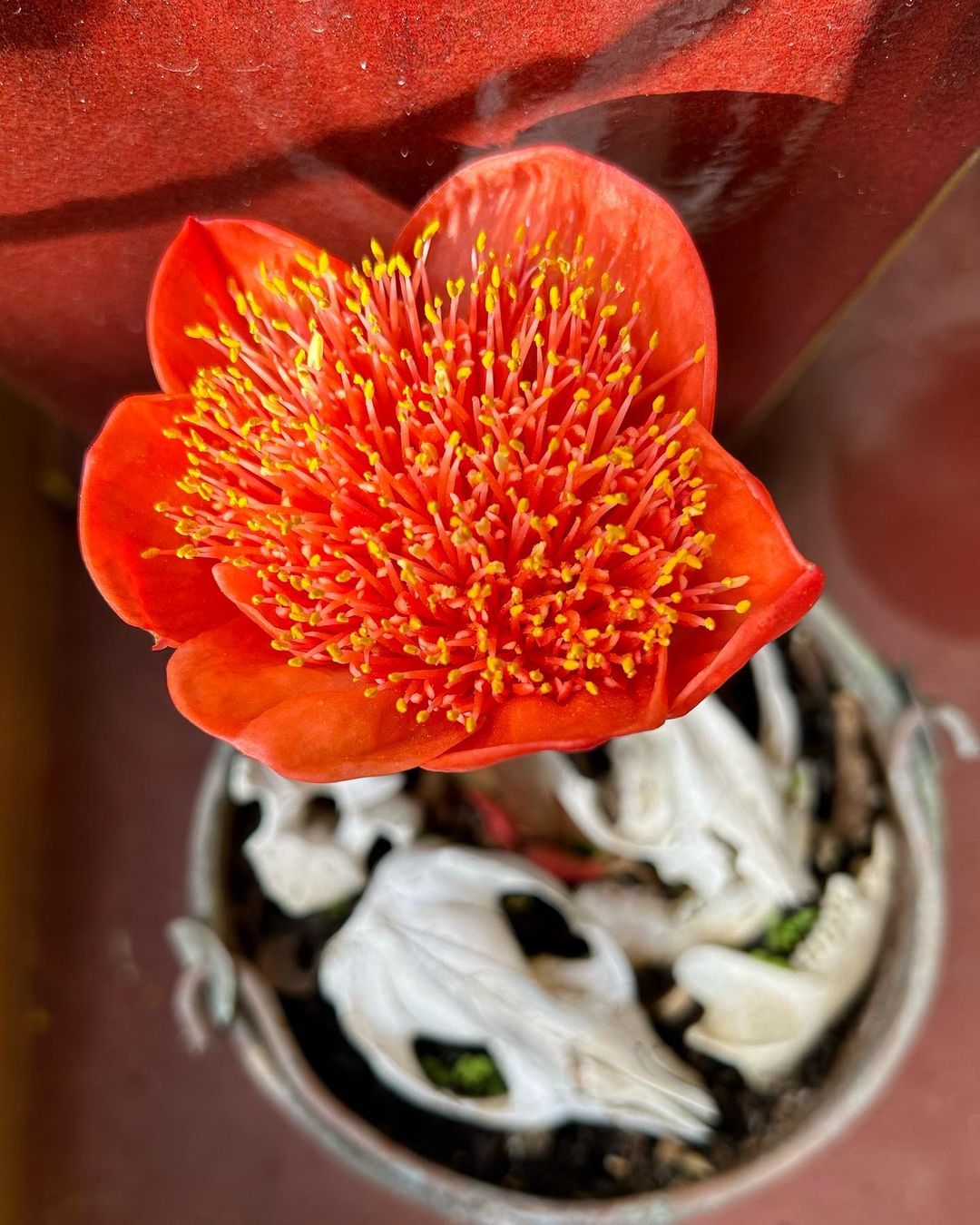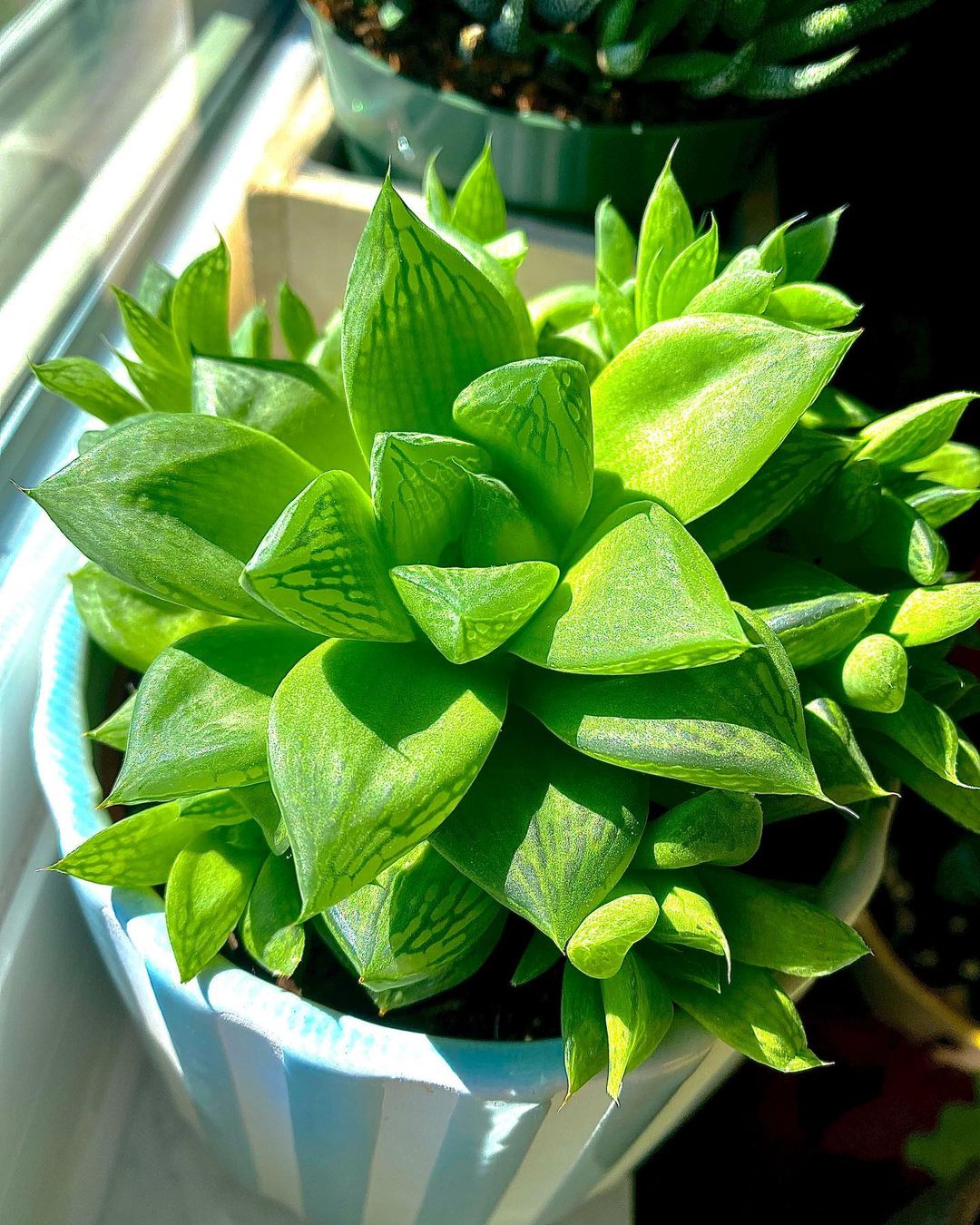Discover expert tips and tricks for Haemanthus Coccineus Care, and learn what paintbrush lily requires to flourish with its uses.
Add a unique and striking touch to your indoor or outdoor garden with the Paintbrush Lily. But before you dive in, learn the essentials about Haemanthus Coccineus Care with our expert advice!
Common Names: African tulip, April fool, Bloodflower, Blood lily, Red Cape flower, Red Cape Tulip, Cape Tulip, Paintbrush Lily, March Flower, Powderpuff Lily, King-of-Candia, Pincushion, Shaving Brush
Botanical Name: Haemanthus coccineus
USDA Zones: 9-11
Also Check Chilacayote Squash Care
What is Haemanthus Coccineus?
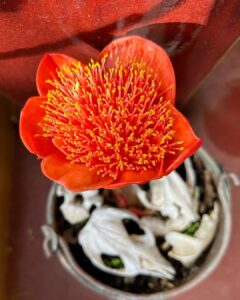
Haemanthus, belonging to the Amaryllidaceae family, are perennial bulbs that can be either evergreen or deciduous. These plants feature strap-shaped leaves and dense umbels of small flowers, sometimes accompanied by colorful bracts. The flowers of Haemanthus Coccineus appear from late summer to fall; they are particularly striking, appearing as umbels of small, red blooms surrounded by red bracts on sturdy brown stems; the plant can reach up to 14 inches tall. The leaves of this plant appear after the flowers have bloomed, and the flowers may be followed by fleshy white or red fruits.
Find How to Grow String of Nickles
Propagating Haemanthus Coccineus

Propagate by Offsets
You can propagate Haemanthus Coccineus by offsets from early to mid-spring. Once the offsets have matured enough and grown roots, they can be carefully separated from the mother plant. After separating them, place the offsets in a container and maintain barely moist soil until they establish themselves, at which point they can be planted in their permanent location.
Propagate by Seeds
Sow the seeds directly outdoors in the fall. This ensures optimal growth and germination.
Harvest seeds from flawless fruit and allow them to become significantly overripe. Clean and dry the extracted seeds. Since the seeds do not store well, it is best to sow them as soon as possible.
- Sow Haemanthus seeds in deep seed trays as soon as possible after harvesting, using a very well-drained, sandy medium with some fine compost added.
- Lightly press the seeds into the soil, leaving the top of the seed visible.
- Water thoroughly after sowing and then again only after the first leaves appear.
- Afterward, water well once every two to three weeks. When the leaves start to yellow, stop watering entirely.
- Gradually resume watering when the leaves reappear after the dormant period.
- Allow young plants to remain in seed trays for at least two years before transplanting them into large, deep pots with a diameter of around 12 inches.
- Be sure to choose pots that can accommodate mature plants, as they typically do not respond well to being disturbed repeatedly.
Varieties
Haemanthus x clarkei would be the ideal hybrid Haemanthus coccineus to seek out, as it has existed for quite some time. It was initially observed in the late 1800s and is believed to be a cross between H. coccineus and H. albiflos. Col Trevor Clarke, for whom it was named, cultivated it in the Kew Gardens.
Read About Passiflora Caerulea Growing Guide
Growing Haemanthus Coccineus in Pots
For growing Haemanthus Coccineus in Pots, use a fast-draining soil mix consisting of equal parts potting soil and either perlite, pumice, or coarse sand. During the growing season, ensure the soil is regularly watered, but avoid saturating it. This plant flourishes in full sun, filtered sun, or morning sun. Interestingly, the leaves reach their largest size when the plant is situated in shadier conditions.
The bulbs are quite sizable, measuring about 4 inches in diameter, and require sufficient space for growth.
Note: Choose deep pots with a diameter of approximately 12 inches. It’s important to select pots that can accommodate mature plants, as they don’t typically respond well to being disturbed repeatedly.
Growing Needs of Haemanthus Coccineus
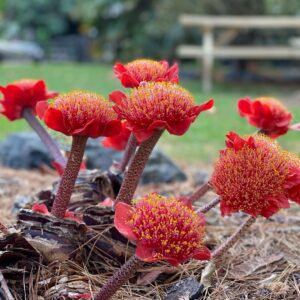
Location
Haemanthus Coccineus prefers full sun to partial shade. Choose a location that offers some protection while still allowing the flowerheads to be visible and appreciated without being overshadowed or concealed by surrounding plants.
Soil
Use light, well-draining soil for growing Haemanthus Coccineus with a pH range between 6.5-8.5.
Water
To ensure proper growth during the growing season, regularly water the soil while avoiding over-saturation. Allow the top half of the soil to dry out before watering again, and ensure that there is no waterlogging.
In the spring, reduce the amount of water to promote the plant’s transition into a period of dormancy. Due to the risk of dehydration and sunburn during the harsh summer heat, Wild Haemanthus Coccineus tends to stop growing altogether.
Note: When planting Haemanthus Coccineus directly into the ground, carefully choose a location that has excellent drainage and relies solely on natural rainfall without being affected by artificial watering systems.
Read about Martha Washington Geranium Care Guide
Haemanthus Coccineus Care
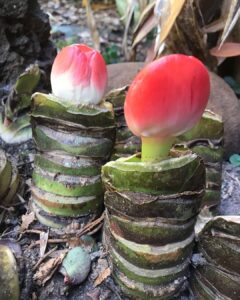
Fertilizer
Improving both the quality of flowers and the resistance to leaf spotting diseases can be achieved by lightly applying a dressing of sulphate of potash from late summer to early spring. It is important to note that fertilizers containing blood and bone should be avoided, as they have high nitrogen content.
Repotting
Under optimal conditions, bulbs can produce a sizable clump. Hence, it’s necessary to repot Haemanthus Coccineus every four to five years, as the soil will deplete, and the bulbs will outgrow the container, particularly considering their large size.
Pruning
Haemanthus coccineus care is easy as it has low demand; this plant needs no pruning. Eliminate yellow, dying leaves.
Pests and Diseases
The presence of a toxic compound in Haemanthus coccineus deters moles and mole rats from consuming them, which is one of their few vulnerabilities as they experience minimal other issues.
If you keep Haemanthus coccineus outdoors during the summer, watch out for spider mites, thrips, aphids, mealybugs, and snails. The plant is susceptible to root rot, powdery mildew, leaf-spot disease, and botrytis petal blight. These issues are commonly caused by excess moisture in the flowers or foliage or the soil. To achieve the best results, keep the leaves dry and avoid water-logging.
Check Out Graptosedum ‘Daruma Shu-rei’ Care
Toxicity
Mild stomach upset may occur if ingested, and skin irritation may result from contact. It is advisable to wear protective equipment, including gloves when handling Haemanthus coccineus.
Medicinal and Landscaping Uses of Haemanthus Coccineus
- The fresh leaves of this plant were commonly used as a dressing for treating septic ulcers, sores, and pustules caused by anthrax.
- Additionally, a diuretic was prepared by boiling sliced bulbs in vinegar, which was then mixed with honey.
- This concoction was also used to treat asthma.
- It’s worth noting that the bulb contains an alkaloid called coccinine, which has been shown to have convulsive properties.
- Haemanthus coccineus is an excellent choice for underplanting roses and shrubs in flower borders and beds.
- This versatile plant can be used in a variety of ways. It makes an excellent container plant, and its bold, colorful blooms add a touch of vibrancy to any patio or balcony.
- Additionally, it is a great choice for rock gardens, where its compact size and low-growing nature are an asset.
- The plant also attracts beneficial insects, making it a valuable addition to any garden ecosystem.
- For best results, consider using Haemanthus coccineus in front of a mixed border or naturalizing it in lightly shaded areas.
Interesting Facts about Haemanthus Coccineus
- The Flemish botanist de L’Obel created the first illustration of a South African flower to appear in a European publication, most likely the blood flower, which was also likely the first flower to be collected from Table Mountain.
- The common name “bloedblom” was likely given due to the belief that it had the ability to stop bleeding.
- Some common names, such as “April fool” or “March lily,” indicate the time of flowering. While others, such as “paintbrush lily,” refer to the appearance of the inflorescence or leaves.

